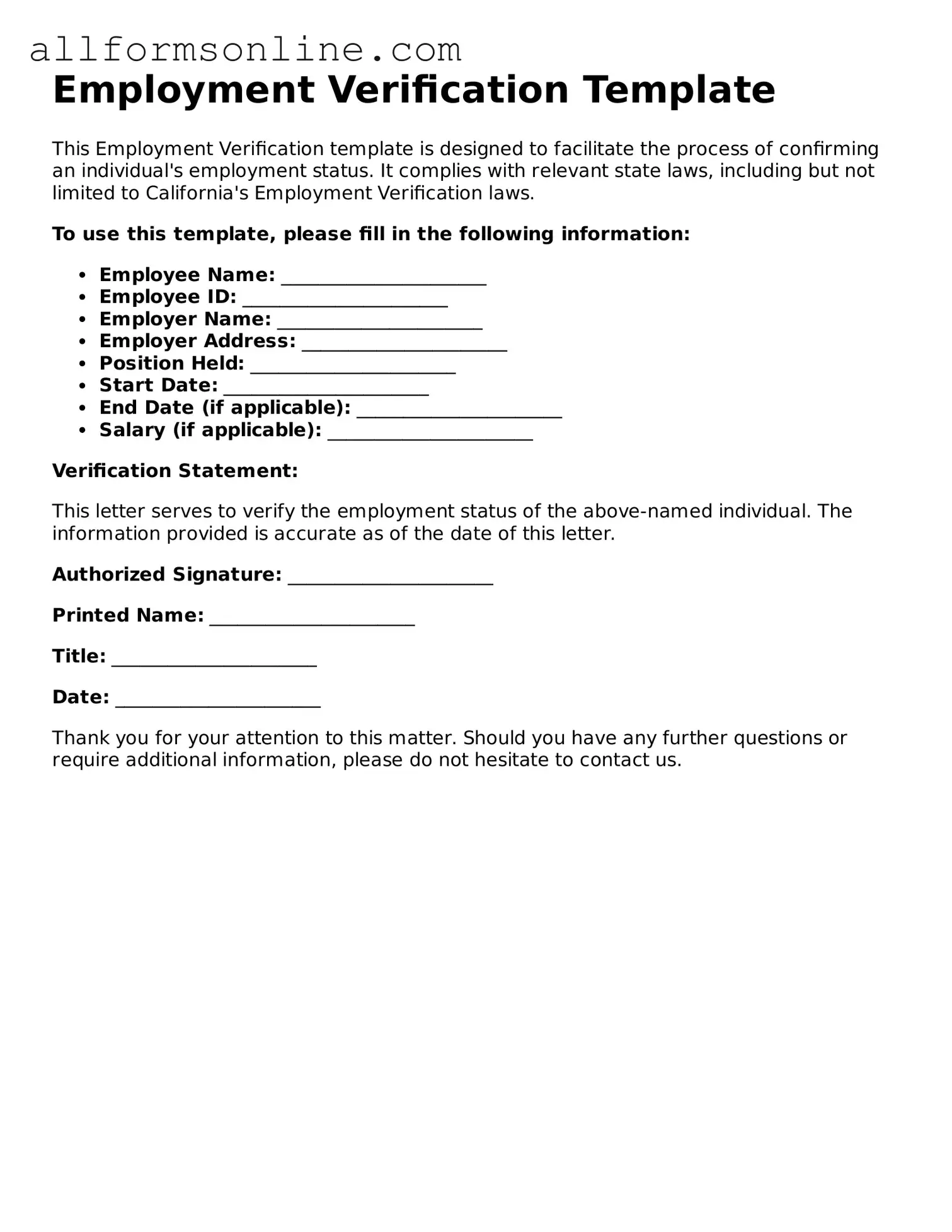What is an Employment Verification form?
An Employment Verification form is a document used to confirm an individual's employment status. Employers, lenders, or other organizations may request this form to verify details such as job title, employment dates, and salary. It serves as proof of employment and can be essential for various applications, including loans, leases, or background checks.
Who typically requests an Employment Verification form?
Employers, banks, landlords, and educational institutions commonly request an Employment Verification form. For instance, when applying for a mortgage, a lender might ask for this form to ensure that the applicant has a stable income. Similarly, landlords may want to verify a tenant's employment before signing a lease.
What information is usually included in the Employment Verification form?
The form typically includes the employee's name, job title, dates of employment, and salary or hourly wage. It may also contain the employer's contact information and the signature of a representative who can confirm the details. Some forms might ask for additional information, such as the employee's work status (full-time or part-time) and job responsibilities.
How can I obtain an Employment Verification form?
What should I do if my employer refuses to complete the Employment Verification form?
If your employer is unwilling to complete the form, first, understand their reasons. Some employers have policies regarding the release of employee information. You can discuss your needs with your HR department or manager. If necessary, provide them with a clear explanation of why the verification is important. If they still refuse, consider asking for a written statement that confirms their inability to provide the verification.
